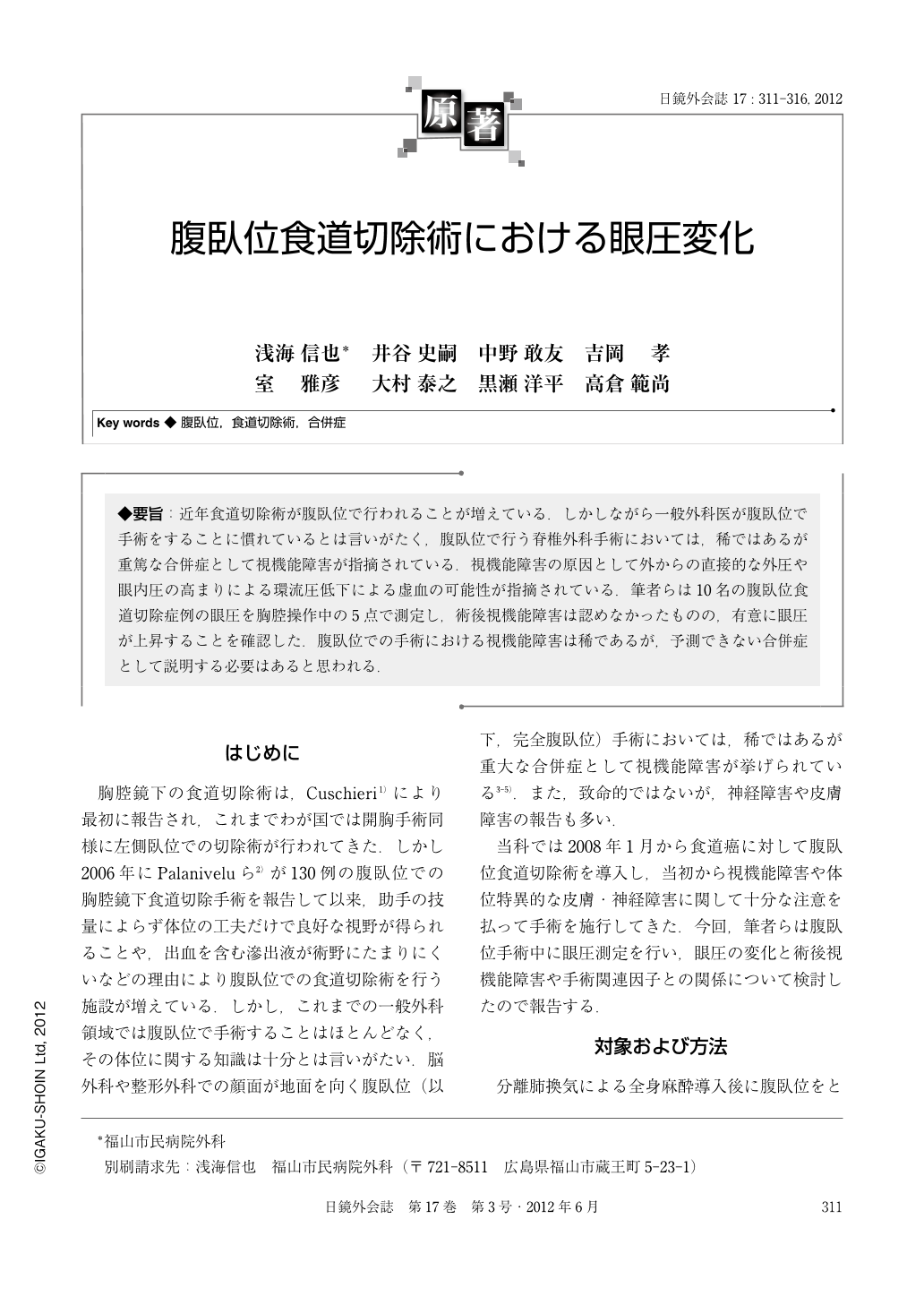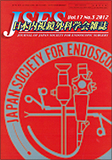Japanese
English
- 有料閲覧
- Abstract 文献概要
- 1ページ目 Look Inside
- 参考文献 Reference
◆要旨:近年食道切除術が腹臥位で行われることが増えている.しかしながら一般外科医が腹臥位で手術をすることに慣れているとは言いがたく,腹臥位で行う脊椎外科手術においては,稀ではあるが重篤な合併症として視機能障害が指摘されている.視機能障害の原因として外からの直接的な外圧や眼内圧の高まりによる環流圧低下による虚血の可能性が指摘されている.筆者らは10名の腹臥位食道切除症例の眼圧を胸腔操作中の5点で測定し,術後視機能障害は認めなかったものの,有意に眼圧が上昇することを確認した.腹臥位での手術における視機能障害は稀であるが,予測できない合併症として説明する必要はあると思われる.
Recently there has been increasing interest in esophageal mobilization in the prone position. However, esophageal mobilization in the prone position is a less familiar surgical approach for the general surgeon. Postoperative visual loss is a rare but serious complication reported after spine surgery in the prone position. Visual loss may be caused by direct external pressure on the eye or by ischemic optic neuropathy as a result of low ocular perfusion pressure. The intraocular pressure (IOP) and the ocular perfusion pressure are inversely correlated. We measured IOP in 10 patients undergoing esophagectomy in the prone position. IOP was measured at five time points : anesthetized supine (supine1), immediately after prone (prone1), 2hour after prone (prone2), at the end of the procedure after prone (prone3), after changing back to supine (supine2). The median IOP in the both eyes at the points of prone2 and prone3 increased significantly from the after anesthetized supine position. However, no patients reported ophthalmic complication. Prone positioning increases IOP during the procedures. Because ophthalmic complications in the prone position may have be a rare but a terrible possibility, it is important for clinicians to be aware of their possible occurrence.

Copyright © 2012, JAPAN SOCIETY FOR ENDOSCOPIC SURGERY All rights reserved.


